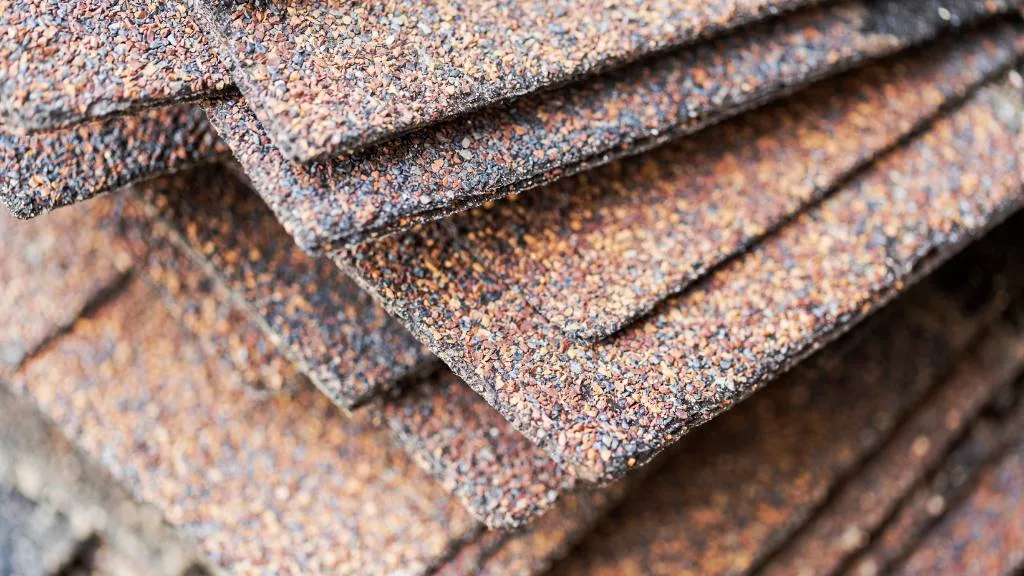
When it comes to roofing materials, there are various options to choose from, each with its own set of benefits and drawbacks. Two popular options are asphalt shingles and rubber roofing, which are known for their durability, affordability, and versatility.
However, deciding between the two can be challenging, especially if you’re not familiar with their differences. In this article, we’ll provide you with expert insights into asphalt shingles and rubber roofing, including their pros and cons, lifespan, cost, and maintenance requirements.
Whether you’re a homeowner or a contractor, this guide will equip you with the knowledge to make informed decisions about which roofing material is best for your project. So, let’s dive in and compare asphalt shingles vs rubber roofing!
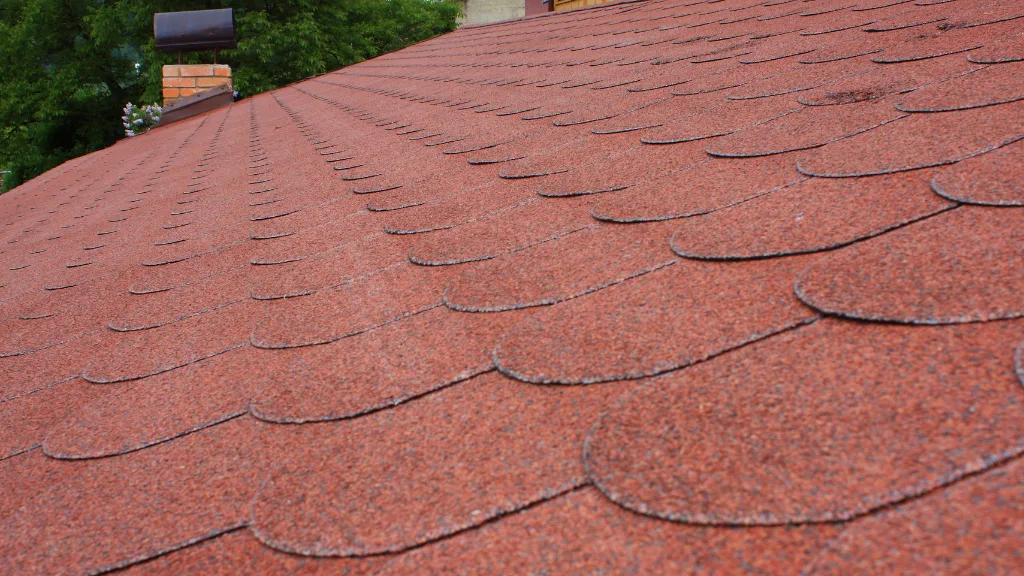
Asphalt Shingles
Asphalt shingles are a widely used roofing material for sloped roofs. They are made from asphalt-saturated fiberglass and covered with granules of rock.
In this section, we will discuss the pros and cons of using asphalt shingles for your roofing needs.
Pros
- Affordability: Asphalt shingles are generally less expensive than other roofing materials such as slate, tile, and metal. Their cost per square foot is more affordable, making them a popular choice among homeowners.
- Ease of Installation: Installing asphalt shingles is relatively easy, which can result in lower installation costs. Most roofing contractors are familiar with this material, making it quicker and more straightforward to install.
- Variety of Styles and Colors: Asphalt shingles come in a wide range of colors, styles, and textures, allowing you to choose a look that complements your home’s exterior and enhances its curb appeal.
- Maintenance: With proper maintenance, asphalt shingles can last up to 20 years. Regular inspections and minor repairs can help prolong the lifespan of your roof.
Cons
- Durability: While asphalt shingles are a more cost-effective option, they may not provide the same level of durability as other materials like slate or metal. Over time, they can deteriorate and curl due to weather conditions, UV rays, and thermal shock.
- Susceptibility to Extreme Weather: Asphalt shingles offer less protection against extreme weather conditions, such as hail, heavy rain, and snow. These elements can cause them to become damaged, requiring repair or replacement.
- Environmental Impact: The manufacturing process of asphalt shingles involves nonrenewable resources and they are not easily recyclable at the end of their lifespan. This may be a concern for homeowners who want to minimize their environmental impact.
When deciding on a roofing material, consider the specific needs of your home, such as your local climate, the slope of your roof, and your aesthetic preferences. Remember to consult with a professional roofing contractor for guidance and expert advice to ensure that the right decision is made for your home.
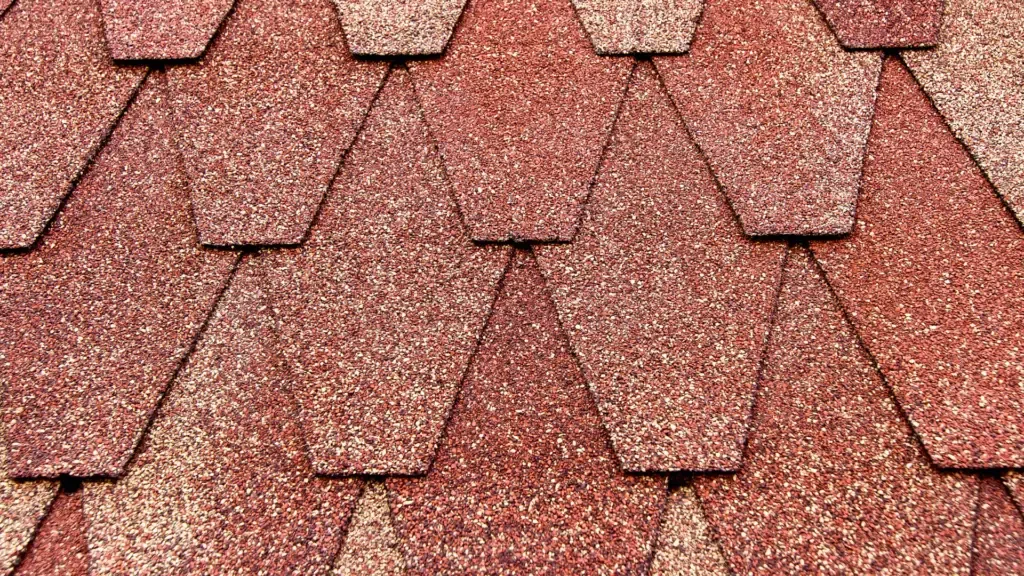
Rubber Roofing
Rubber roofing is a popular choice among homeowners for its durability, eco-friendliness, and cost-effectiveness. This type of roofing material is made from ethylene propylene diene monomer (EPDM) and can withstand extreme weather conditions, making it a reliable option for protecting your home.
Pros
There are several benefits of choosing rubber roofing for your home:
- Durability: Rubber roofs have a long lifespan, often lasting up to 50 years with proper maintenance. They are resistant to rain, storms, hurricanes, and UV rays, ensuring your home stays protected in various weather conditions.
- Low Maintenance: Requiring minimal upkeep, rubber roofs rarely suffer from peeling, curling, or other common issues found in traditional roofing materials. It’s essential to have a roofing contractor inspect your rubber roof periodically to maintain its durability.
- Eco-Friendly: Rubber roofing materials can be made from recycled rubber, reducing the environmental impact of your roofing choice. In addition, rubber roofs are energy-efficient, helping lower your heating and cooling costs.
- Ease of Installation: This lightweight material is relatively simple for roofing contractors to install, potentially saving you time and labor costs.
- Insulation: Rubber roofs provide excellent insulation, helping to keep your home warm in the winter and cool in the summer.
Cons
Despite the many advantages of rubber roofing, there are some drawbacks worth considering:
- Initial Cost: The installation cost of a rubber roof can be higher than that of asphalt shingles due to factors like the complexity of the project or the type of material chosen. Nonetheless, the long-term benefits may outweigh this initial expense.
- Appearance: While functional, rubber roofing may not offer the same curb appeal as other materials such as metal roofing or traditional asphalt shingles. Make sure to consider your home’s overall design and appearance when choosing a roofing material.
- Odor: Some rubber roofing materials can produce a mild odor, especially during the installation process. This issue usually dissipates over time, but it’s essential to take this into consideration.
When considering rubber roofing for your home, take the time to weigh the pros and cons. Consult with a qualified roofing contractor to determine if rubber roofing is the best option for your specific needs and budget.
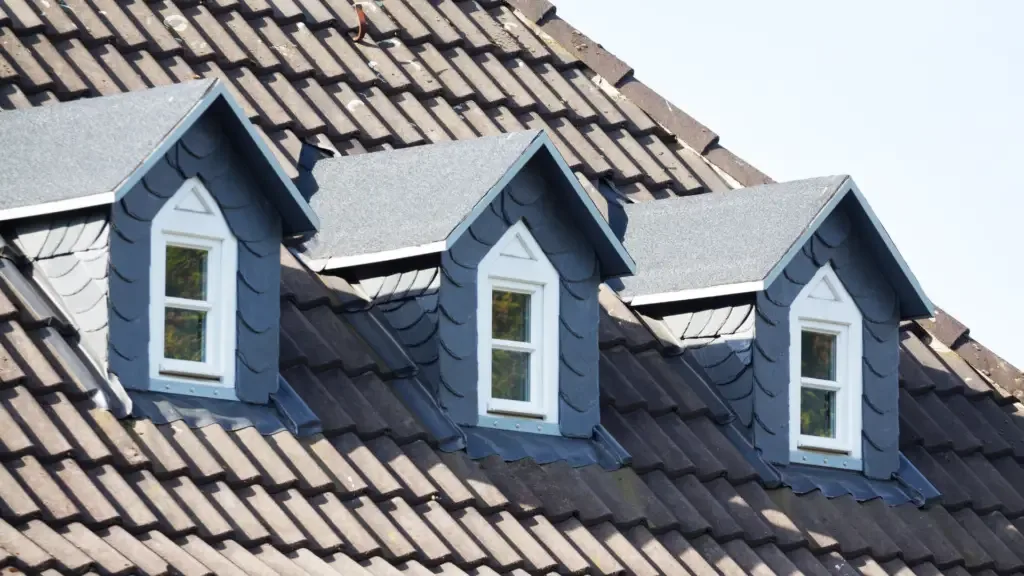
Materials Comparison
When selecting the right roofing material for your home, it’s essential to compare the different options available. In this section, we will provide a brief comparison of asphalt shingles and rubber roofing, focusing on key aspects such as durability, cost-effectiveness, and recycled materials.
Asphalt Shingles
Asphalt shingles are a popular choice for roofing, offering a wide range of benefits:
- Durability: While the lifespan of asphalt shingles depends on the type and quality, they typically last between 10 to 50 years.
- Cost-Effectiveness: Asphalt shingles are less expensive than other roofing materials, making them a budget-friendly option for many homeowners.
- Recycled Content: Although some asphalt shingles can contain recycled materials, the overall recycled content is generally lower compared to rubber roofing.
Rubber Roofing
Rubber roofing, on the other hand, is an eco-friendly alternative providing a different set of advantages:
- Durability: Rubber roofing is known for being highly durable, with lifespans reaching 50 years or more when properly maintained and installed by a professional contractor.
- Cost-Effectiveness: While the initial cost of rubber roofing may be higher than that of asphalt shingles, its longevity and reduced maintenance needs often outweigh the initial expense.
- Recycled Materials: Rubber roofing is often made from recycled rubber, making it an environmentally conscious choice for homeowners who value sustainability.
In summary, both asphalt shingles and rubber roofing provide unique features and benefits. Consider your specific needs, budget, and preferences to make an informed decision when selecting the best roofing material for your home.
Cost and Installation
When considering the cost and installation of asphalt shingles versus rubber roofing, it is important to compare the differences in various aspects such as pricing, ease of installation, and long-term value.
Asphalt Shingles
Asphalt shingles are a popular choice among homeowners due to their affordability and ease of installation. The average installation cost for asphalt shingles ranges from $1 to $4 per square foot, making them a more economical option for roofing.
Here are some factors to consider regarding asphalt shingles:
- Pricing: Asphalt shingles come in various price ranges, based on factors such as quality, design, and performance. Basic asphalt shingles tend to be the least expensive, while high-end options can cost more.
- Installation: Installing asphalt shingles is relatively easy and can be carried out by most contractors. The process involves attaching the shingles to your roof trusses or rafters using nails or staples, creating a secure and durable roof covering.
- Insulation and energy costs: Although asphalt shingles provide some level of insulation, they may not be the most energy-efficient option. Upgrading to more energy-efficient shingles or adding additional insulation under the shingles can help reduce energy costs.
Rubber Roofing
Rubber roofing, also known as EPDM or TPO roofing, is known for its durability and waterproofing capabilities. The average cost for rubber roof installation is between $4.25 and $14 per square foot, making it slightly more expensive than asphalt shingles.
Here are some factors to consider for rubber roofing:
- Pricing: Rubber roofing materials can vary in price, with EPDM being the least expensive single-ply membrane, followed by TPO and PVC options.
- Installation: The installation process for rubber roofing can be more complex than that of asphalt shingles. Proper installation requires specialized tools and experienced contractors to ensure a watertight and weather-resistant result.
- Maintenance: Rubber roofs tend to require less maintenance than asphalt shingles, as they are more resistant to damage from weather events such as hail or fire.
- Cost-effectiveness: While rubber roofing may be more expensive initially, its durability and longer lifespan can make it a cost-effective choice in the long term.
Now that you have a better understanding of the cost and installation aspects of both asphalt shingles and rubber roofing, you can make a more informed decision about which option is best for your home.
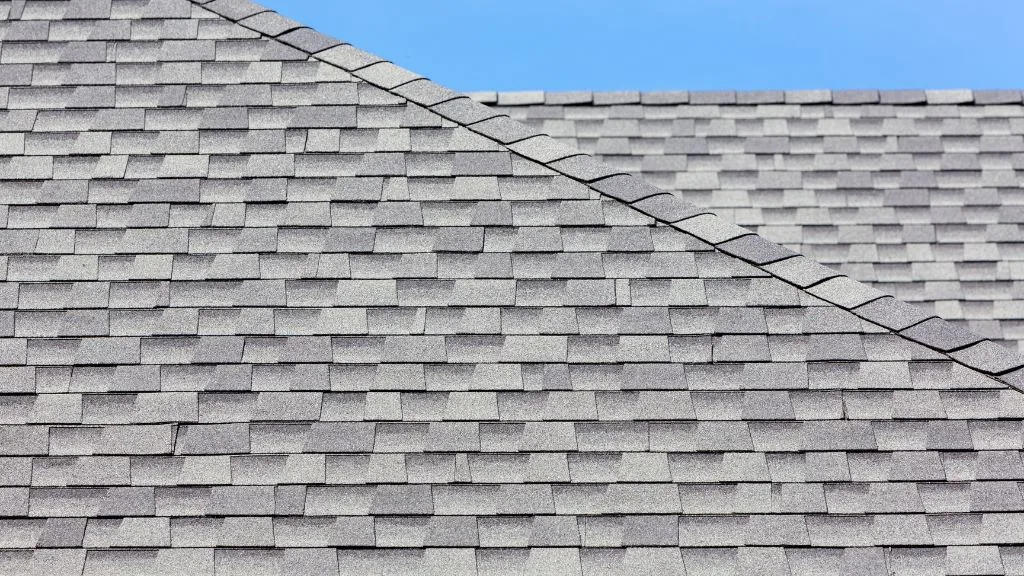
Design and Appearance
When comparing the design and appearance of asphalt shingles and rubber roofing, it’s important to consider how each option will impact your home’s overall look and curb appeal.
Asphalt shingles are known for their traditional and versatile appearance. They come in a wide range of colors and styles, which makes it easy for you to find a look that complements your home’s exterior design.
Asphalt shingles are made for sloped roofs and have a softer, more textured look, due to their asphalt-saturated fiberglass base.
Here are some popular asphalt shingle styles:
- 3-tab shingles
- Architectural shingles
- Premium shingles
Rubber shingles, on the other hand, have a sleek and modern appearance. They are best suited for flat roofs, and their eco-friendly material sets them apart from traditional asphalt shingles.
Rubber shingles come in various colors and designs, but their overall look is more streamlined and less textured than asphalt shingles.
Some common rubber shingle styles include:
- EuroSlate
- EuroShake
- EuroTile
Your choice of roofing material will significantly impact your home’s appearance, so weigh the pros and cons of each option. Think about how each option aligns with your design preferences and the architectural style of your house.
Asphalt shingles offer a more traditional look, while rubber shingles cater to those who prefer a modern and eco-friendly option.
By considering the design, appearance, and suitability of both asphalt and rubber shingles for your roof, you will be able to make an informed decision that enhances your home’s curb appeal.
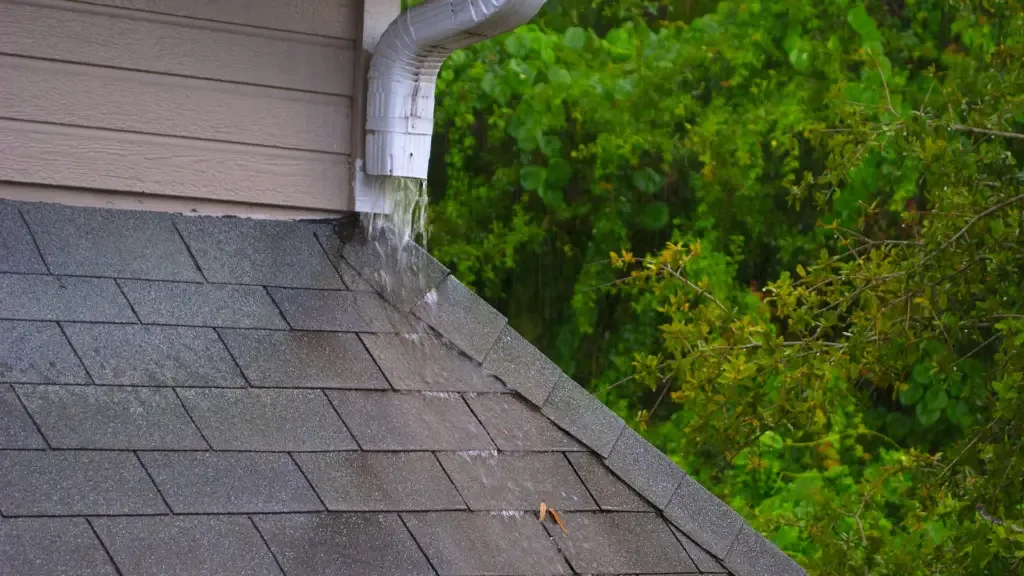
Environmental Impact and Sustainability
When comparing asphalt shingles and rubber roofing, it’s important to consider their environmental impact and sustainability. Both materials offer unique benefits and drawbacks in this area.
Asphalt shingles have been a popular roofing choice due to their ease of installation, affordability, and longevity (lasting 10 to 50 years depending on the type). However, there is a growing interest in reducing their environmental impact by recycling them, which 35% of roofers selected in their top three improvements.
Some manufacturers, like GAF, strive to minimize their environmental impact by conducting life cycle assessments (LCAs) and providing Environmental Product Declarations (EPDs) for their products.
On the other hand, rubber roofing, specifically ethylene propylene diene monomer (EPDM) roofing, is generally considered more eco-friendly due to its longer lifespan (up to 50 years) and the fact that it’s often made from recycled materials.
Recycled rubber, which can come from old tires, contributes to the creation of rubber roofing, diverting waste from landfills and reducing demand for new raw materials.
The following points highlight the key differences between these materials regarding their environmental impact and sustainability:
- Recycled content: Rubber roofing often contains a higher percentage of recycled materials compared to asphalt shingles. This can lead to a reduced environmental footprint.
- Durability and lifespan: Rubber roofing is known for its durability and ability to withstand extreme weather conditions. Its longer lifespan (up to 50 years) can also decrease the frequency of roof replacements, reducing waste and resources used in production and installation.
- Recycling potential: While there is interest in increasing the recycling of asphalt shingles, rubber roofing already boasts a higher recycling rate, contributing to a more circular economy in the roofing industry.
- Energy efficiency: Both asphalt and rubber roofing can contribute to improved energy efficiency in your building, but rubber roofing generally provides better insulation and energy-saving capabilities. This could lead to lower energy bills and reduced greenhouse gas emissions.
In conclusion, while both asphalt shingles and rubber roofing have their advantages and disadvantages, it’s up to you to weigh the environmental impacts and sustainability of each option when making your decision.
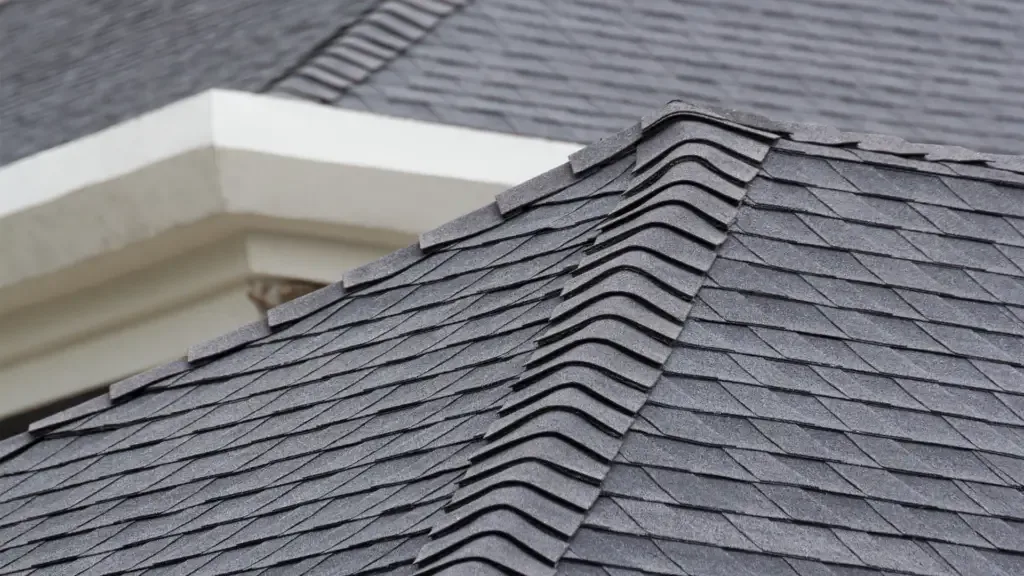
Weather Resistance and Maintenance
When considering weather resistance and maintenance, both asphalt shingles and rubber roofing have their advantages and disadvantages.
Asphalt shingles offer decent protection against various weather conditions, including wind, rain, and snow. However, they may deteriorate faster under extreme weather conditions such as hail and storms.
Asphalt shingles must be adequately maintained to ensure their lifespan of up to 20 years. Regular maintenance include clearing debris, checking for damaged shingles, and preventing moss and mold growth, which can lead to moisture damage.
Rubber roofing, on the other hand, provides better resistance to extreme weather conditions, including hail and storms. Their durability makes them an excellent choice for areas with frequent severe weather events.
Rubber roofing is also resistant to thermal shock, preventing it from becoming brittle due to extreme temperatures, ultraviolet radiation, and cyclic fatigue.
Moreover, rubber roofing requires minimal maintenance. Their resistance to mold and moisture reduces maintenance efforts regarding these issues. Additionally, rubber roofing’s resilience helps maintain the overall roof structure’s integrity against harsh weather conditions, ensuring your home remains safe.
As for heating and humidity, rubber roofing is known to provide better insulation compared to asphalt shingles. This can lead to lower heating costs during the cold months and reduced humidity inside your home, thus providing added comfort.
In summary:
- Asphalt shingles:
- Decent protection against wind, rain, and snow
- Can deteriorate faster under extreme weather conditions
- Lifespan of up to 20 years with regular maintenance
- Requires maintenance for debris, damaged shingles, moss, and mold
- Rubber roofing:
- Superior resistance to extreme weather conditions
- Resistant to thermal shock, UV radiation, and cyclic fatigue
- Longer lifespan (30 years or more) with minimal maintenance required
- Provides better insulation, reducing heating costs and indoor humidity
Considering these factors, carefully assess your region’s weather patterns and weigh the advantages and disadvantages of each roofing material to make the best choice for your home regarding weather resistance and maintenance needs.

